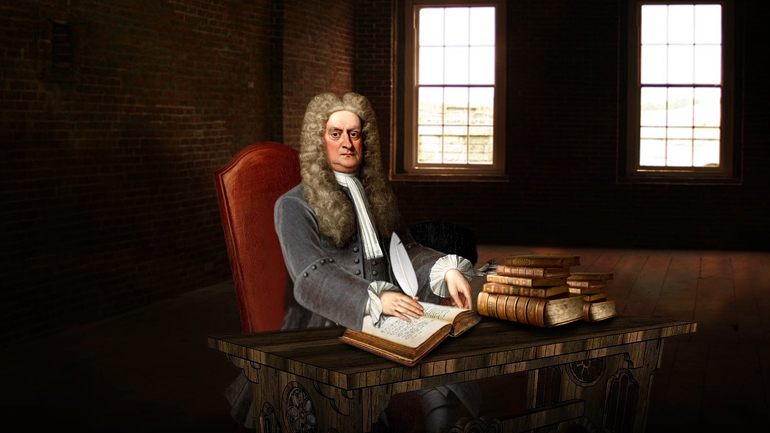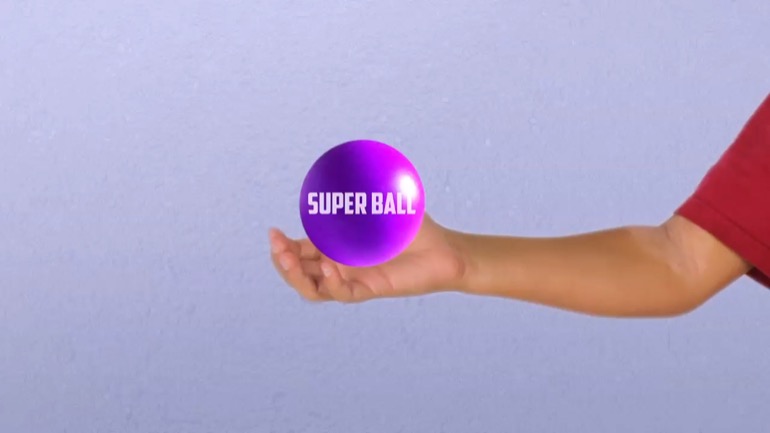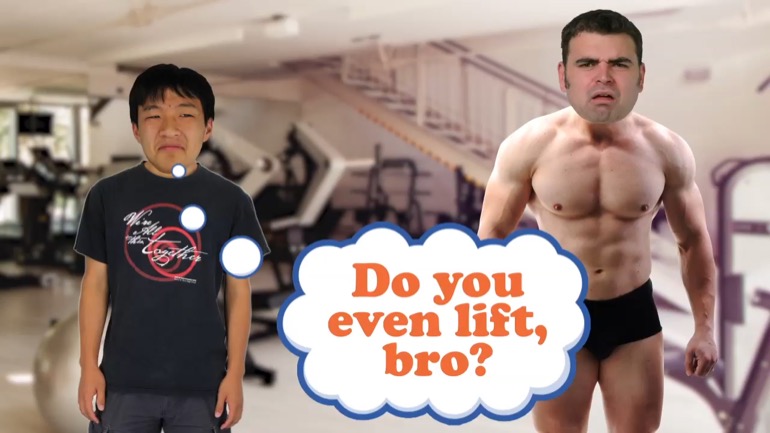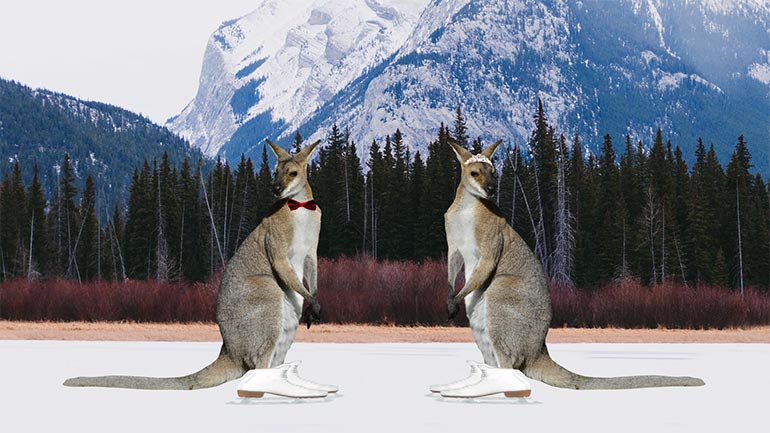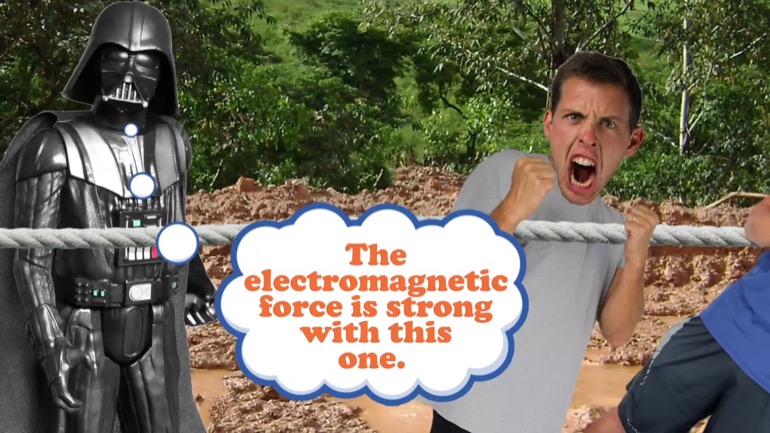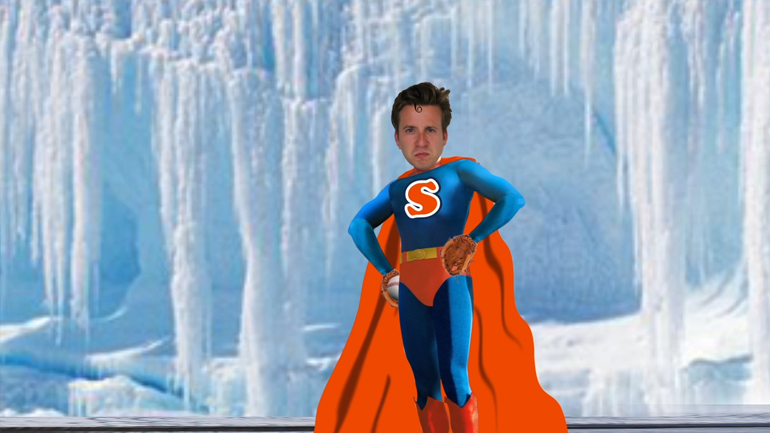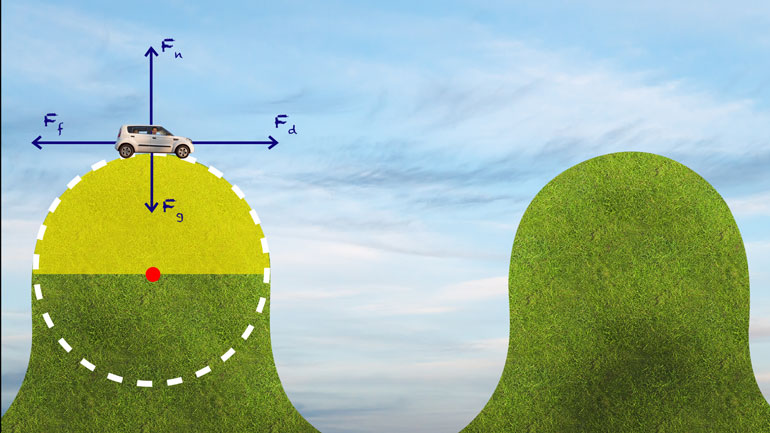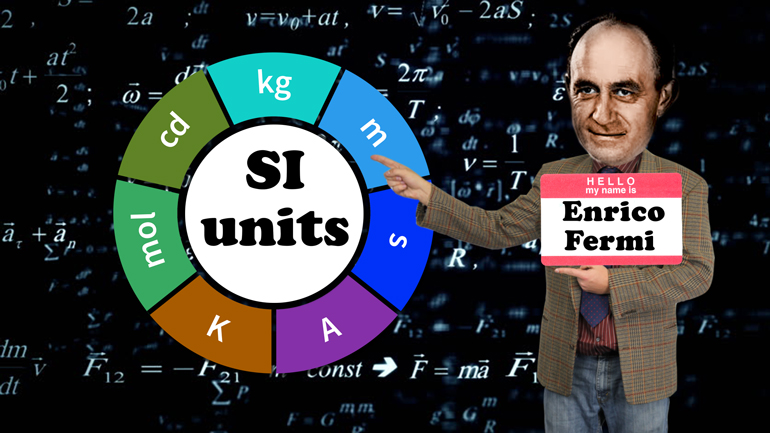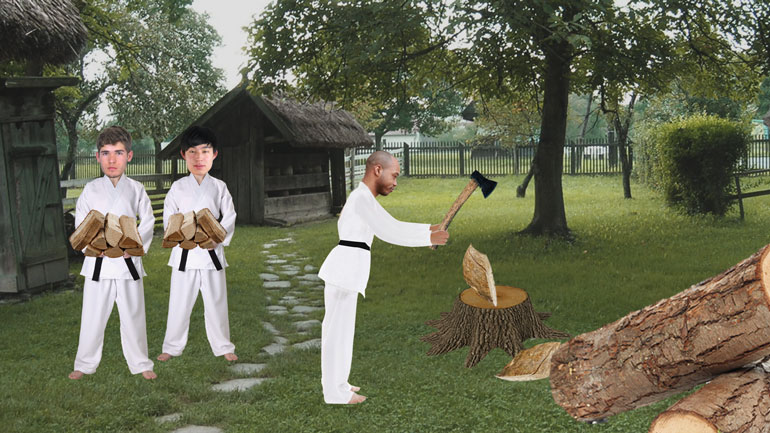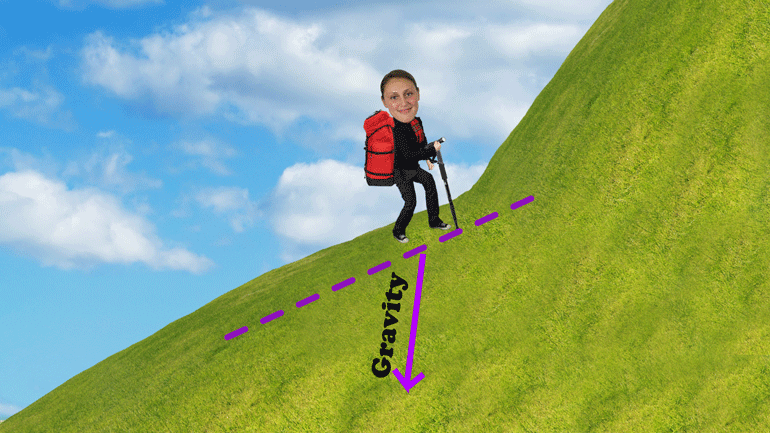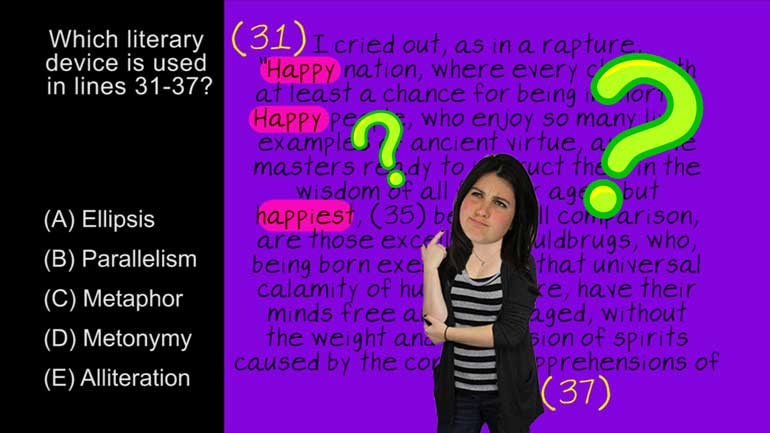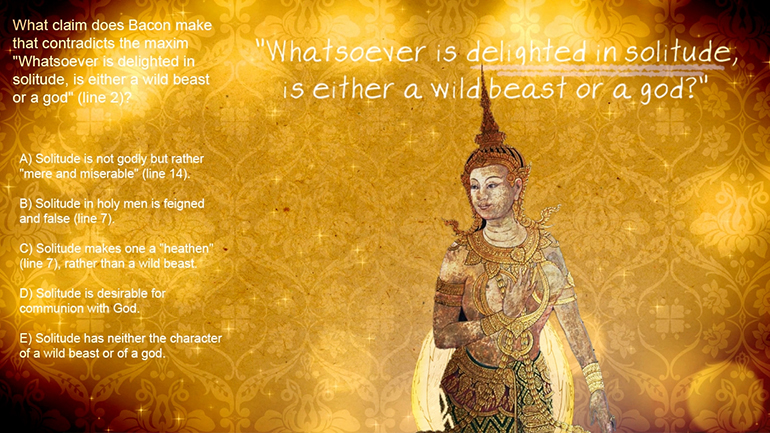ShmoopTube
Where Monty Python meets your 10th grade teacher.
Search Thousands of Shmoop Videos
Physics Videos 34 videos
Isaac Newton. Who was he? Why do we need to know about him? In a physics course, no less? Well, he's only the most famous physicist in history, and...
What are the basics of trigonometry? And why are we learning about this in a physics course? Both good questions. In this video, you'll learn about...
It's time to make our liters and meters work together. Enough of the bickering, right? In this video, we'll do some unit analysis, covering SI Unit...
Physics: Newton's Universal Law of Gravitation 817 Views
Share It!
Description:
Time to dive into Newton's Universal Law of Gravitation. We'll get into inverse square laws, orbital velocities, and all sorts of things Newton used to talk to his kids about at bedtime.
Transcript
- 00:02
Newton's universal law of gravitation man Newton created more
- 00:07
laws than Congress...[mumbling]
- 00:37
you ever get tired of buttering toast yeah me too [Man with buttered toast in a kitchen]
- 00:41
every morning taking that cold hard butter from the fridge and trying to
- 00:44
spread it on a nice piece of sourdough and only there was an easier way but now
Full Transcript
- 00:49
there is thanks to the revolutionary new invention the butter gun 3000, top notch [Man holding a butter gun 3000]
- 00:54
German engineers have built the butter gun using an inverse square law all
- 00:58
right well what is an inverse square law well let me show you say you've got one
- 01:02
piece of toast and one stick of butter well you just load that stick of butter
- 01:06
in the butter gun 3000 stand one meter away take aim and shoot some people love [Man shoots butter gun at slice of toast]
- 01:11
a whole stick of butter on their toast and those people probably have heart
- 01:15
disease just keeping it real but if we want to spread that butter out well we
- 01:19
can double the distance from the toast now we just nail four pieces of toast to [Woman holding board with 4 pieces of toast nailed]
- 01:23
our handcrafted breadboard that chips free with every order and we take our
- 01:28
shot see when the distance is doubled were
- 01:31
able to quadruple the amount of delicious butter breakfast good..Of
- 01:36
course each piece gets 1/4 of the butter but you know say you've got a big hungry
- 01:41
family well four pieces of toast just won't cut it just take one more step [Man aims at bread board with butter gun]
- 01:46
back and triple the distance and then you're able to butter nine pieces of
- 01:50
toast at the same time and each piece gets 1/9 of the butter
- 01:54
well this relationship between the distance from the bread and the amount
- 01:57
of buttered toast works just like gravity both follow an inverse square
- 02:02
law so let's look at that butter gun again
- 02:06
at first when I was at a certain distance away which we'll call D...One
- 02:11
piece of toast got all the butter and I buttered the heck out of it but [Man holding butter gun in kitchen]
- 02:15
when the distance was doubled each piece got 25% of the butter and at triple the
- 02:21
distance the pieces of toast got 1/9 of the butter each so there's pattern here
- 02:26
as distance increases each piece of toast gets an amount of butter that
- 02:30
equals the inverse of the square of the distance well this is an example of an
- 02:35
inverse square law and there are lots of inverse square laws that don't involve [Man discussing inverse square laws]
- 02:39
butter at all the amount of light we get from the Sun or any light source works
- 02:43
as an inverse square law same thing with electrical force and the most famous
- 02:48
inverse square law relates to gravity well let's say we have two planets that are [Two planets spinning]
- 02:52
exerting gravity all over each other then we double their distance the force
- 02:57
of gravity will be 1/4 as strong triple it? yeah 1/9 quadruple it? well the
- 03:03
force of gravity would now be 1/16 of what it was and the info-mercial
- 03:07
business sure doesn't work like that we'll throw in one free butter gun if [Man advertising free butter gun]
- 03:12
you order now but you'll still have to pay for shipping and handling we're not
- 03:15
reducing the price of anything to 1/16 no matter how far away you are well
- 03:20
Isaac Newton took this concept and came up with a whole equation for the force [Isaac Newton appears in field and apple hits his head]
- 03:24
of gravity between two masses Newton's universal law of gravitation says that
- 03:29
the force of gravity between any two objects equals the gravitational
- 03:32
constant times the mass of the first object and the mass of the second object
- 03:38
and all of that is divided by the square of distance between the centers of each
- 03:44
object and this equation applies to any two objects anywhere in the universe so [Newton's equation appears]
- 03:49
right now at the center of the Milky Way 26,000 light-years away there's a huge
- 03:55
black hole called Sagittarius A and that huge black hole is exerting a
- 04:01
gravitational force on you yes you and you know what else you're exerting a [Sagittarius A exerting force on woman]
- 04:07
very small gravitational force right back to it
- 04:10
yeah just sitting there your body is pulling on a black hole that's billions
- 04:14
and billions and billions of kilometers away sure it's a teeny tiny pull that
- 04:18
your body is exerting but still the universe is crazy y'all well it almost
- 04:23
makes this whole butter gun invention seem insignificant [Man looking sad with butter gun]
- 04:27
and because of that insignificance if you call in the next 30 seconds we'll
- 04:31
take $10 off price okay stop with that but you might have noticed that we kind
- 04:36
of just breezed past something just now the gravitational constant also known as
- 04:41
the big G to differentiate it from the little G which is the acceleration of
- 04:45
gravity for objects on earth...Well, the gravitational constant is 6.67408
- 04:51
times 10 to the negative 11th cubic meters over [Gravitational constant appears]
- 04:57
kilograms and seconds squared it can also be written like this with meters
- 05:02
cubed kilograms to the negative first and seconds to the negative second
- 05:06
well those negative exponents show that these units are inverses so that's kind
- 05:11
of a weird bunch of units to you know just slap together there but they're
- 05:15
there for an important reason the universal law of gravitation an equation [Law of gravitation formula appears]
- 05:19
finds the force of gravity between two objects and forces measured in Newtons
- 05:25
and the Newton is a derived unit made up of kilograms times meters over seconds
- 05:31
squared well if we take big G out of the universal gravitational equation and [Big G disappears from equation]
- 05:36
just look at the units of what's left we find two masses that will be measured
- 05:41
in kilograms and radius squared which will be measured in meters well since
- 05:46
the masses will be multiplied we can consider that to be kilograms squared we
- 05:52
have to get from kilogram squared over meter squared to kilograms times meters
- 05:56
over seconds squared so our force measurement uses the right units..Well, we
- 06:01
do that by giving the gravitational constant the necessary units to get us
- 06:04
there and by doing unit analysis we can see that when we add the units in the
- 06:09
gravitational constant back to our universal gravitation equation [Units added to gravitational equation]
- 06:13
well we end up with the unit's needed for Newtons these units were assigned to
- 06:18
the gravitational constant so that we end up with the right unit for force as
- 06:22
far as that value the 6.67408 yeah well that's been found by doing very
- 06:28
careful measurements I can't go into the history of all that measurement because
- 06:32
changed a bit overtime and it stirred up a little controversy here and there but [Men wearing wigs sit down at a table]
- 06:35
if you're curious fire up the machine and read up on the wonderful world of
- 06:39
the gravitational constant and you probably should find a hobby or
- 06:43
something else to do with your life too all right now for our purposes we're
- 06:47
just gonna round this down to 6.67 times 10 to the negative 11
- 06:51
and we're not going to list the unit's every time trust us they're not going [Man walks to computer chair]
- 06:55
anywhere so let's take a look at how this universal law really works well
- 06:59
let's say we have two planets that are distance D apart if we double the
- 07:03
distance between the planets and triple one planet's mass how does that change
- 07:06
the force of gravity between them hmm we don't really have a lot of numbers [Man walks up to window]
- 07:10
here to work with yes this one is one of those big picture concept type of
- 07:14
questions but we know the gravitational constant 6.67 times 10 to
- 07:18
the negative 11 blah blah blah but even that's not going to be useful here
- 07:22
so let's make this real simple for ourselves we're just gonna make
- 07:26
everything equal to one even big G well let's use the universal gravitation
- 07:31
equation the force of gravity equals big G times mass one times mass two and all [Gravitation equation appears]
- 07:38
that's divided by the distance squared well when we turn all those letters into
- 07:43
ones we find a force of one Newton now let's make the changes well change the
- 07:48
first planet from one to three and we'll change the distance from one to two and
- 07:52
of course we have to square that distance now when we do the math we find
- 07:56
the new force is three over four Newton's aka 3/4 so even though we're
- 08:01
tripling one mass and only doubling the distance because of that inverse square
- 08:05
law it results in a reduction of force by one quarter well changing the
- 08:11
distance makes a big difference here when it comes to gravity you know just [Man in kitchen with butter gun]
- 08:14
like our butter gun man this thing is a scientific marvel and a bargain too - But
- 08:19
let's take a look at gravity in our own neighborhood well the earth of the Moon [Moon orbiting Earth]
- 08:23
are about 4 times 10 to the 8 meters apart from each other
- 08:27
it depends on the time of the year but that's about the average the earth has
- 08:30
mass of six times 10 to the 24th kilogram and the moon has a mass of 7
- 08:35
times 10 to the 22nd kilogram well what's the force of the earth pulling on
- 08:41
the moon? and what is the force of the moon
- 08:44
pulling on the earth all right wow so the moon is big really really big and [Moon spinning in space]
- 08:49
the earth is two orders of magnitude bigger than that we knew they wouldn't
- 08:53
exactly fit in the trunk of our car but still when you see the numbers you know
- 08:57
yikes alright let's make sure we have all the [Man discussing gravitation of the moon and earth]
- 08:59
numbers we need for our gravitational constant equation: big G is always there
- 09:04
because well it's a constant then we have the mass of
- 09:09
the earth and the mass of the moon those are our mass one and mass two and sure [Mass of earth and moon appears]
- 09:14
enough we've got our distances there so all we have to do is plug in the numbers
- 09:18
and since our masses and distance only had one sig fig our answer will too, which
- 09:24
gives us 2 times 10 to the 20th Newtons but wait there's more you knew we'd say
- 09:30
that is that the force that the earth is exerting on the moon or is that the
- 09:33
force the moon is exerting on the earth well the answer to that question is yes
- 09:38
it's both the earth and the moon are a third law pair here so they're doing that
- 09:43
whole equal and opposite thing on each other [Earth exerting gravitational pull on the moon]
- 09:46
it's like Newton is double dipping on this problem we've got his third law of
- 09:51
motion and his universal law of gravitation and we get it Isaac you're
- 09:56
awesome but did you would invent a better way to butter toast [Man speaking to Newton painting]
- 10:00
well did you smart guy? Alright, let's
- 10:05
look at one more problem and we'll keep it local all right like we just said the
- 10:09
moon and the earth are 4 times 10 to the 8th meters apart and the earth still has its
- 10:13
mass of 6 times 10 to the 24th given all this information how fast is the moon
- 10:18
orbiting the Earth? well hold on we're not even given the [Man discussing question on shmoop show stage]
- 10:22
moon's mass here come on how are we supposed to figure out its speed okay
- 10:26
well let's just mark down what we know right now and then we'll figure out how
- 10:29
to get to where we're going we're looking for a velocity and like always
- 10:33
we've got big G in the mix we've got the Earth's mass and we have a distance to
- 10:38
work with but our law of universal gravitation equation doesn't even have
- 10:42
velocity in it is there an equation that does use velocity well we've got
- 10:47
circular motion going on here and that's what an orbit is after all we know that [Moon orbiting the Earth]
- 10:52
circular motion involves a centripetal force and the
- 10:55
centripetal force equation uses velocity ding-ding-ding that equation says that
- 11:00
the centripetal force equals mass times the square velocity divided by the [Man discussing centripetal force equation]
- 11:04
radius well in the case of an orbit the centripetal force comes from gravity and
- 11:08
we have our universal law of gravitation equation for that force so can set these
- 11:13
two equations equal to each other like soand since the moon orbits the earth
- 11:18
we would use the moon's mass in our centripetal force equation after all [Two centripetal force equations appear]
- 11:23
it's the moon's velocity that we're trying to figure out all right now that
- 11:26
we've set these equations equal to each other we can cancel out the variables
- 11:30
that they have in common so we can get rid of the moon's mass altogether and we
- 11:35
can also kick out one R from each side too.. all right well now we're left with this [r unit removed from equation]
- 11:40
equation big G times the mass of the earth over the distance equals velocity
- 11:44
squared well do we have the right numbers for all those variables? yeah we
- 11:49
sure do we can plug in the numbers and solve for V when we multiply big G times [velocity equation appears]
- 11:54
the mass of the earth and divide that by distance and don't forget that we need
- 11:58
to find the square root well we come up with a velocity of roughly 1,000 meters
- 12:03
a second which is 3,600 kilometres an hour or about 2,237 miles per hour and
- 12:10
man everything in space moves crazy-fast I guess there's no point in stopping to
- 12:15
smell the roses when you're in a total vacuum so gravity in space are pretty [Astronaut floating in space]
- 12:20
big concepts to wrap our heads around I mean everything in the universe seems so
- 12:24
big billions and trillions and gazillions of kilometres between planets
- 12:28
and stars but at the same time all these planets and stars and asteroids and [Lines join between planets and stars in space]
- 12:33
everything are all pulling on each other thanks to gravity it's more than our
- 12:38
minds can really comprehend it especially when you haven't had a
- 12:41
balanced breakfast and what breakfast is balanced without a scrumptious piece of
- 12:46
buttered toast... just saying [Man fires butter gun at toast]
Related Videos
When you're about to marry the love of your life, not many things could stop you. However, finding out that your future hubby is keeping his crazy...
Here at Shmoop, we work for kids, not just the bottom line. Founded by David Siminoff and his wife Ellen Siminoff, Shmoop was originally conceived...
ACT Math: Elementary Algebra Drill 4, Problem 5. What is the solution to the problem shown?
AP® English Literature and Composition Passage Drill 1, Problem 1. Which literary device is used in lines 31 to 37?
AP® English Literature and Composition Passage Drill 2, Problem 1. What claim does Bacon make that contradicts the maxim "Whatsoever is delig...
